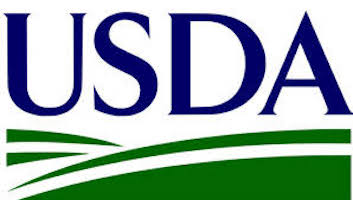
Preventing illness and contamination across the food supply chain is a challenging process, with many regulatory bodies involved. It can be difficult to know where the responsibilities of one group ends and another begins. The USDA and the FDA work closely together in different areas of the food supply chain to ensure sanitation and safety. In some cases, USDA safety and compliance requirements and inspections are similar to the FDA’s, and in other ways they are different.
USDA Safety and Compliance Requirements for Food Processors
Grant of Inspection and HACCP
The USDA requires that businesses and facilities working with meat, poultry, eggs and egg products apply for a Grant of Inspection. There are several steps to this process, including application, registration, sanitation requirements, and hazard analysis and critical control points (HACCP), among others. This is similar in some ways to requirements set forth by the Food Safety and Modernization Act (FSMA).
HACCP for a Grant of Inspection is similar to FSMA requirements in many ways. HACCP requires the following:
- Written hazard analysis: Where hazards are likely to occur in the production process and how these can be prevented.
- A flow chart: A flow chart should describe the steps in the product process, the purpose of each process, and any hazards associated.
- Written hazard plan: For each product, a written hazard plan should address the associated hazards and how to prevent or mitigate risk.
- Corrective actions: How to prevent a problem or mitigate risk if a problem occurs.
- Validation and Verification: Validating that the HACCP plan works and verifying that it continues to work.
- HACCP Records: How to maintain records to show the HACCP plan is being followed.
Sanitation Procedures
Businesses and facilities that work with meat and poultry must have strict sanitation procedures in place. This helps to prevent the spread of bacteria and foodborne illness, or limit the damage if contamination occurs. These procedures and requirements are also similar to FSMA.
A thorough and effective sanitation plan is one of the best ways to prevent illness and mitigate risks in your facility. Your Sanitation Standard operating procedures should include the following. Keep in mind that all facilities are unique, and this list is not exhaustive.
- Team responsibilities: who is responsible for sanitation and what their duties include.
- Disassembly: Machines that are not suitable for clean-in-place procedures must be disassembled.
- Scrubbing: For sanitary cleaning chemicals to work, debris, grease and oil must first be removed from tools and machines.
- Facility cleaning: The facility itself, as well as the tools and equipment, should also be cleaned, including floors, walls, and ceilings.
- Sanitary garments: Garments like gloves, aprons, and other gear should be changed at least daily, or more often if necessary.
- Verification: A process must be in place to show that these procedures are being conducted properly.
- Corrective actions: If any cleaning procedures are not followed, corrective actions should be in place to stop production if necessary and prevent the problem from happening again.
- Recording-keeping: Accurate record-keeping shows when cleaning procedures are being conducted, and by whom.
Recall Procedures
Even the best sanitation and hazard management procedures don’t work 100% of the time. This is where recall procedures come in. Just as FSMA requires recall procedures for other food processors, the USDA requires recall procedures for meat and poultry processors.
Recall procedures are intended to reduce the impact of contamination by stopping the distribution of contaminated food. A recall can also be used if contamination is not harmful, but foods have been mislabeled or an excess of harmless ingredients have been used. In meat processing and other food processing, the requirements are similar. You should have the following, though this list is not exhaustive.
- Recall team: who is required to implement a recall and what are their duties?
- FSIS office: the contact information for your local Food Safety and Inspection Service office.
- Hazard evaluation: on what criteria do you decide to conduct a recall?
- Recall scope: how will you determine where products must be recalled from?
- Records: how are products traced and how do you store and manage these records?
- Recall notice: how will you communicate your need for a recall?
- Recall disposal: how will the recalled products be disposed of?
Keeping food and facilities safe requires everyone’s participation. With thorough procedures in place, as well as verification and regular assessments to ensure these procedures work, you can reduce risks of fines, complications and recalls.







